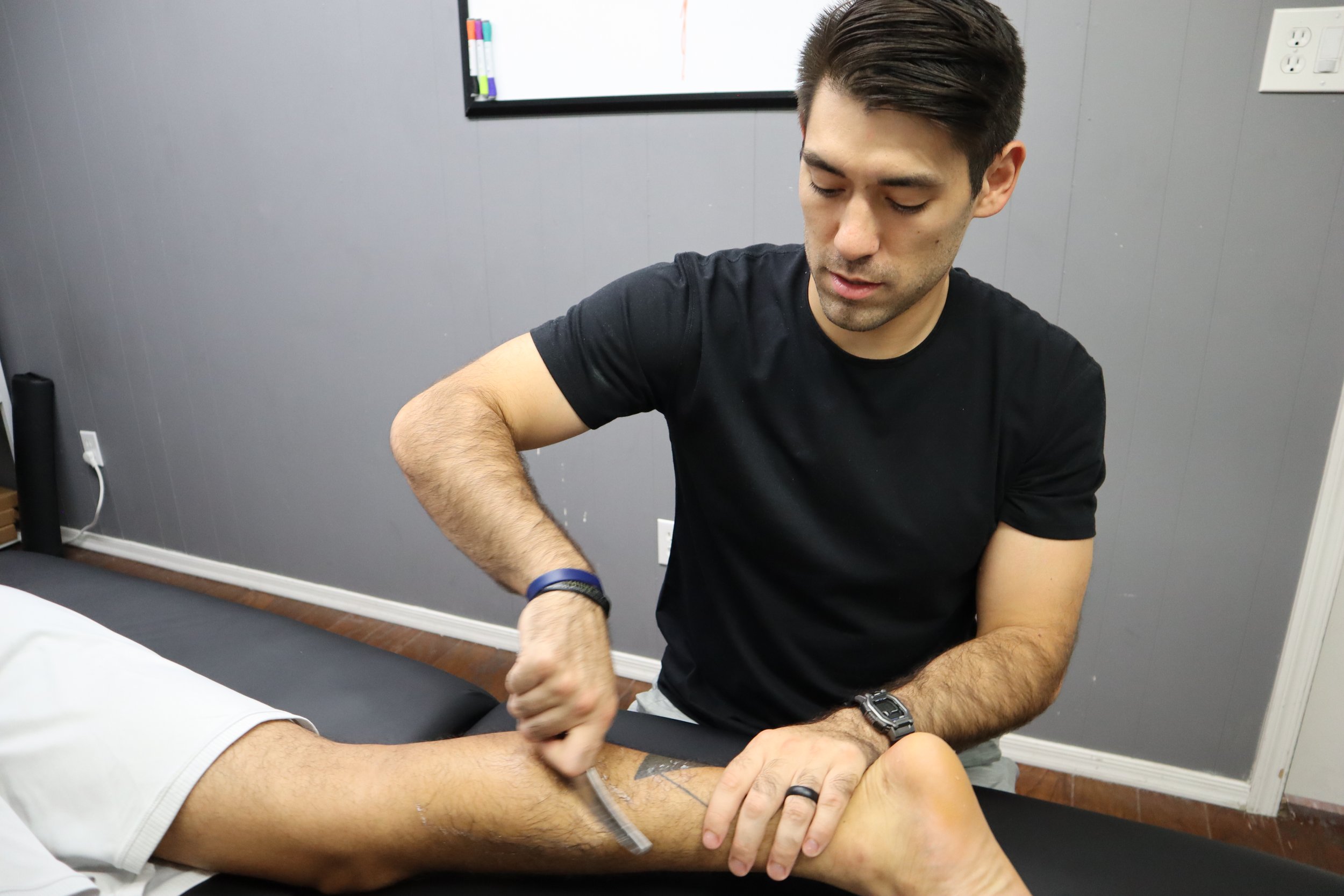Myofascial Release
Underneath the skin, our bodies are covered in a net of connective tissue known as “fascia.” Fascia touches every portion of the body, covering muscles and internal organs, lying in between every layer and uniting the body together. Not unlike the connective tissue we find in an orange when we open it up! Fascia is the connective tissue underneath the skin that encases muscles and organs.
Fascia has many different functions. It acts as a support, providing structure and organization. It acts as an information pathway, distributing tension and absorbing load transferred from tissue to tissue. And it provides flexibility between structures, giving muscles and joints mobility by reducing friction between layers.
For healthy movement to occur, these layers of connective tissue need to be able to slide freely. When fascia becomes too stiff or dry due to factors such as dehydration or chronic inflammation, the space between the fascia and the muscles begins to tighten, the lubricating fluid between the tissues decreases, and the resulting increase of friction can produce restriction and pain.
Manual Therapy for Fascial Health
Fascia is responsive to the movement that we give it. An adjustment is a fantastic way of rapidly change the fascial dynamics of a restricted area. Manual therapy massage techniques are also great for increasing lubrication between the layers of muscle and fascia. I implement many of these strategies when performing myofascial release therapy with clients (“myo”=muscle).
In a typical treatment session, you may see several myofascial techniques being used. I typically warm the tissue up with a soft tissue tool. This allows me to map out regions of friction and inflammation. Then I work deeper into the muscle, often incorporating “pin & stretch” techniques for lengthening target area in relationship to its corresponding fascial chain.
Myofascial release has been helpful for clients that are struggling with:
Muscle Strains
Tendonitis
Postural Tension/Pain
High Training Workload
Muscular Imbalance
Headaches
Hip and Shoulder Stiffness
If you are dealing with any of these, book an appointment or call for more information.

